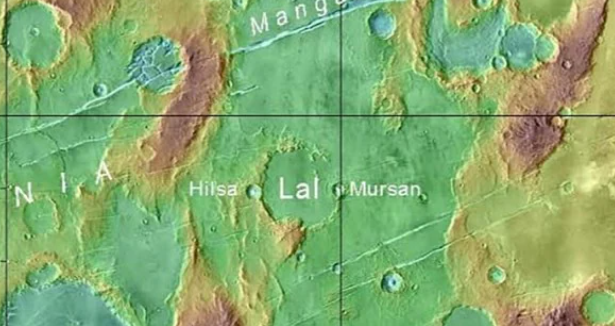What Do India’s New Mars Craters Reveal?
The Physical Research Laboratory (PRL) in Ahmedabad has made a big find on Mars, they have found three new craters in the Tharsis volcanic region. This accomplishment shows how India is making more and more advances in the study of planets.
Naming of the New Martian Craters
The International Astronomical Union’s Working Group for Planetary System Nomenclature has given these craters the names Lal, Mursan, and Hilsa after they were found. These names honor India’s historical and personal ties, adding to the country’s legacy of representation in space travel.
Details on the Named Craters
- Lal Crater: It is 65 km across and was named after early Indian geophysicist Prof. Devendra Lal, who was also the head of PRL. It stands out because it is covered in a lot of lava.
- Mursan Crater: This is a smaller crater on the eastern edge of Lal Crater. It is about 10 km wide. It was named after a town in Uttar Pradesh to show how different India’s landscapes are.
- Hilsa Crater: It is about 10 km across and is on the western edge of Lal Crater. Its name comes from a town in Bihar, which is another example of a place on Mars.
Scientific Significance of Lal Crater
The Lal Crater is amazing not only because of its size but also because of what it means for science. Its whole surface is covered with lava, but SHARAD/MRO underground radar found a 45-meter-thick layer of sedimentary rock below it. This finding supports the idea that Mars once had a lot of water because it shows that water has flowed there in the past.
Further Insights from Mursan and Hilsa Craters
Due to their closeness to Lal, the Mursan and Hilsa craters offer a unique chance to study how the environment has changed over time. Their makeup and how they relate to each other show that the Lal Crater’s material filling happens in waves, suggesting that Mars’s surface and atmosphere are changing quickly.
Month: Current Affairs - June, 2024
Category: Science & Technology Current Affairs






